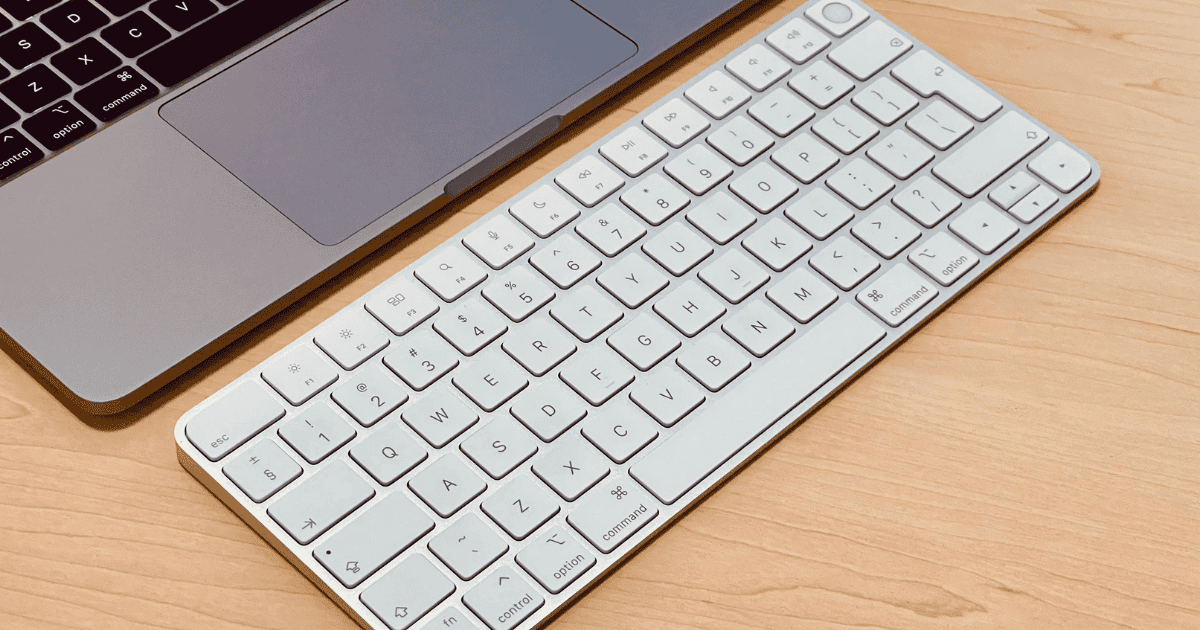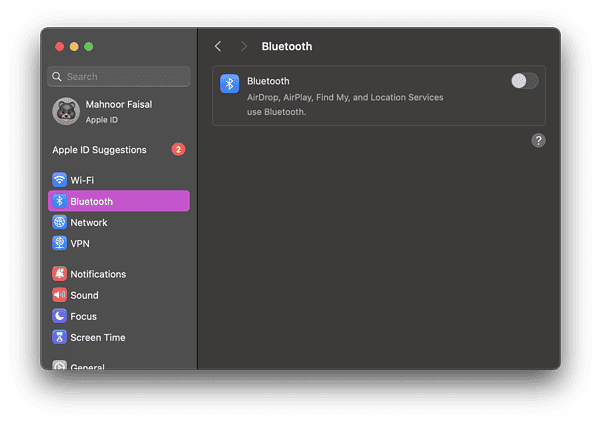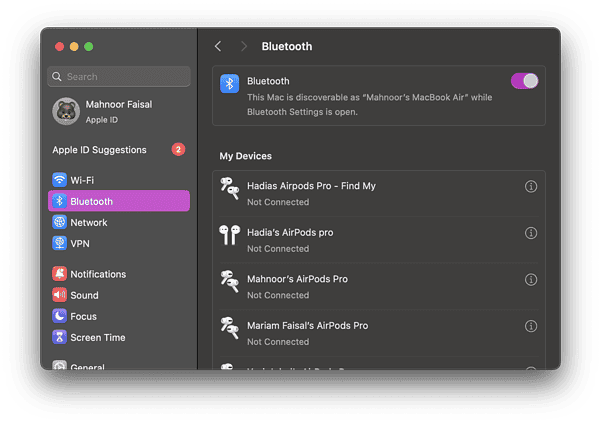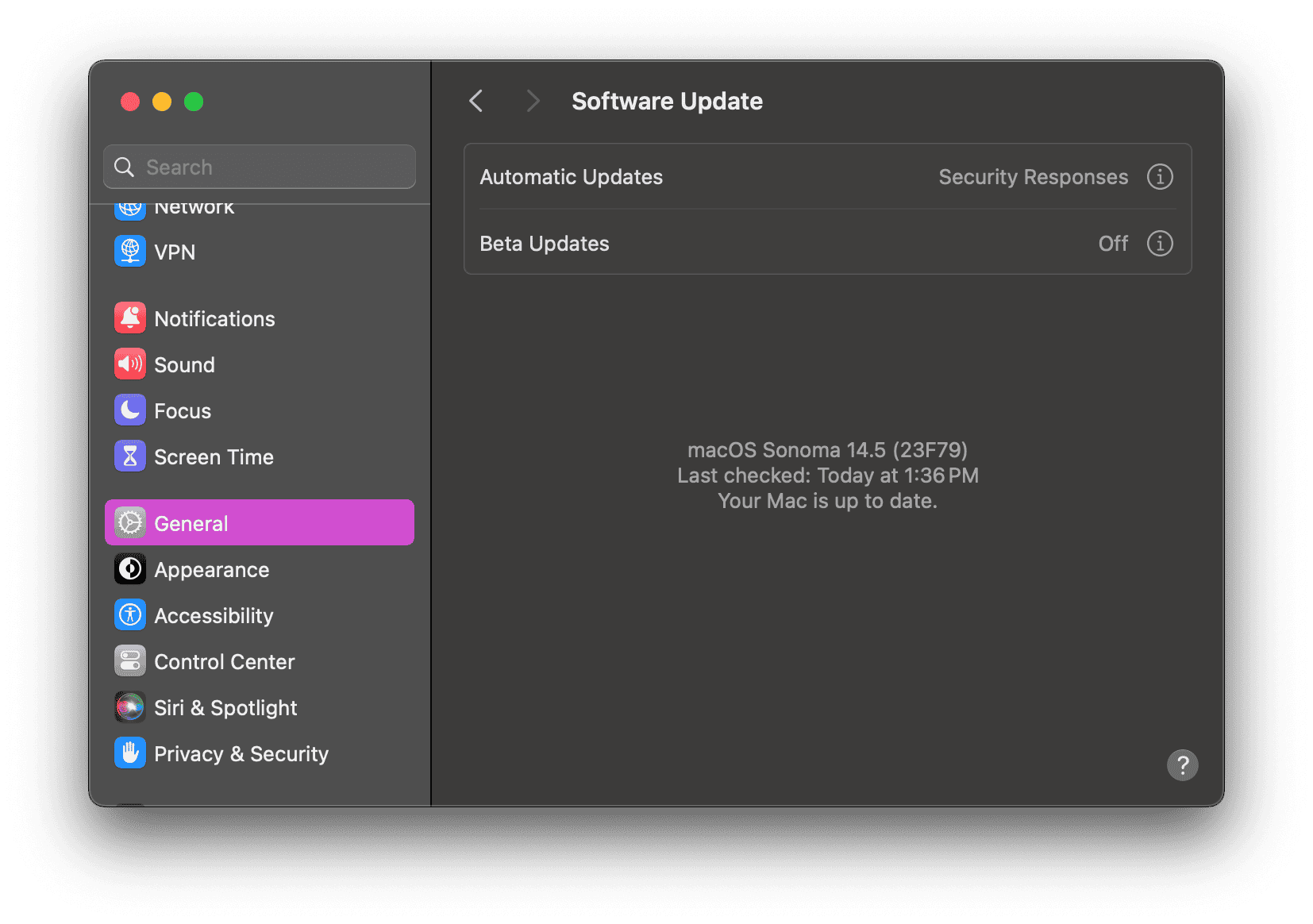There’s nothing more annoying than setting up your Mac’s wireless peripherals only to find out that your keyboard is not working. Like most people, you might start wondering whether it’s time to drop a few hundred bucks on a new wireless keyboard again.
Although it’s not impossible that your unit is defective, chances are you’re just dealing with software issues. I recommend going through these troubleshooting steps before you assume the worst. Let’s dive in.
How Do I Fix My Mac Wireless Keyboard?
1. Toggle Bluetooth On and Off
Time needed: 2 minutes
More often than not, such issues can be fixed by simply turning Bluetooth off and on again. Here’s what to do:
- Click the Apple logo in the menu bar and select System Settings from the dropdown menu.
- Select Bluetooth from the sidebar on the left.
- Toggle off the switch next to Bluetooth.
- Wait a few seconds, and then toggle on the switch next to Bluetooth.
2. Re-Pair Your Keyboard With Your Mac
If Bluetooth is toggled on and working properly, it’s worth unpairing your wireless keyboard with your Mac and then pairing it again.
- Click the Apple logo in the menu bar and select System Settings from the drop-down menu.
- Now, select Bluetooth from the sidebar on the left.
- Simply look for your wireless keyboard in the list of devices under My Devices, and click the information icon (i) next to it.
- Now, click the Forget This Device… button.
- A prompt asking you to confirm your decision will appear. Simply click Forget Device again.

Your wireless keyboard has now been disconnected from your Mac. Now, to re-pair your keyboard with your Mac, turn on your wireless keyboard. Your keyboard’s name will now appear under the Nearby Devices list. All you need to do is click the Connect button once it appears and follow the on-screen instructions to pair your keyboard with your Mac.
3. Toggle off Slow Keys
Although uncommon, there’s a chance your wireless keyboard may not be working with your Mac due to misconfigured system settings. For instance, your keyboard may not be working as intended if Slow Keys is disabled, a setting that modifies the time you need to hold a key to activate them. So, we recommend going to System Settings > Accessibility > Keyboard and turning off Slow Keys.
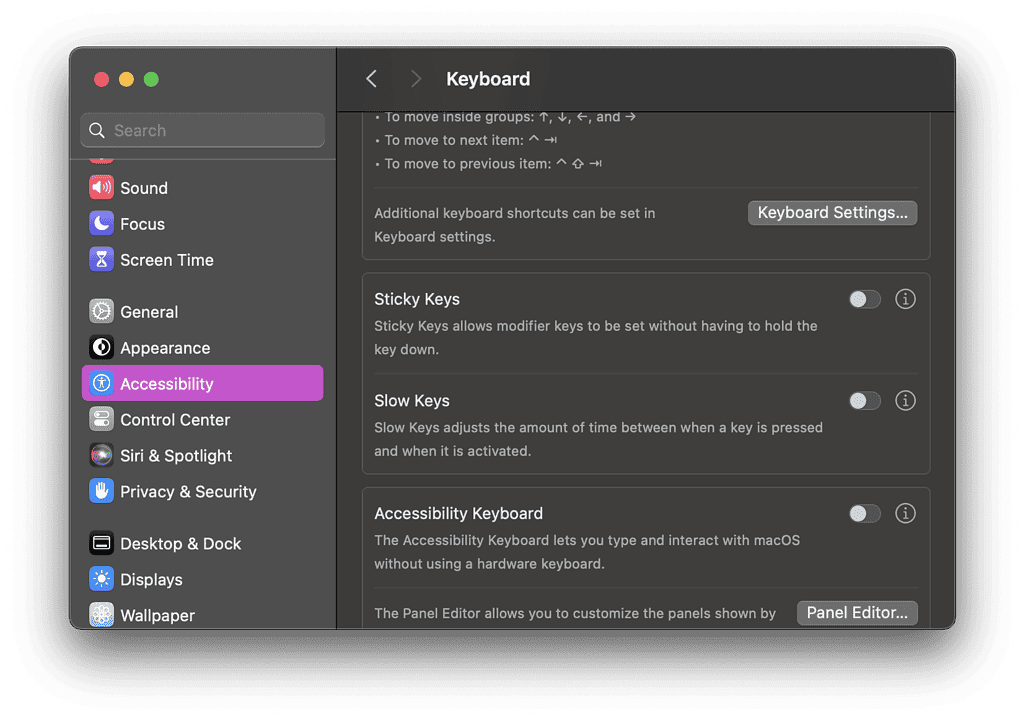
4. Ensure Your Wireless Keyboard is Charged
Although this fix is quite self-explanatory, your wireless keyboard may have simply run out of juice. Most wireless Mac keyboards tend to have incredible battery life. For instance, Apple claims that their Magic Keyboard can last about a month on a single charge.
Considering this, you may have simply forgotten when you last charged it. I recommend charging your keyboard for at least two hours before troubleshooting again. You can check its battery percentage level in System Settings > Keyboard > My Devices.
5. Update to the Latest macOS Version
At times, such issues can stem from technical glitches on Apple’s end. Fortunately, the company is always on the lookout for such issues and quickly addresses well-known ones by rolling out new software updates. If all fails and your wireless keyboard still refuses to work with your Mac, try installing the latest macOS update.
- Click the Apple logo in the menu bar, and select System Settings from the dropdown menu.
- Now, go to General > Software Update.
- You’ll now need to wait a few seconds, as your Mac will check if any pending updates are available.
- If an update is available, simply click the Update Now button next to the Updates Available text. If no updates are available, you’ll see “Your Mac is up to date”.
While you’re at it, you can also toggle on Automatic Updates. This way, you’ll be informed every time a new update is available and won’t need to check System Settings. To do so, tap the information icon (i) next to Automatic updates. Now, toggle on all the switches, especially Install macOS updates and Install Security Responses and system files. In case you’re unable to update your Mac via this method, you can also update your Mac in the terminal.
